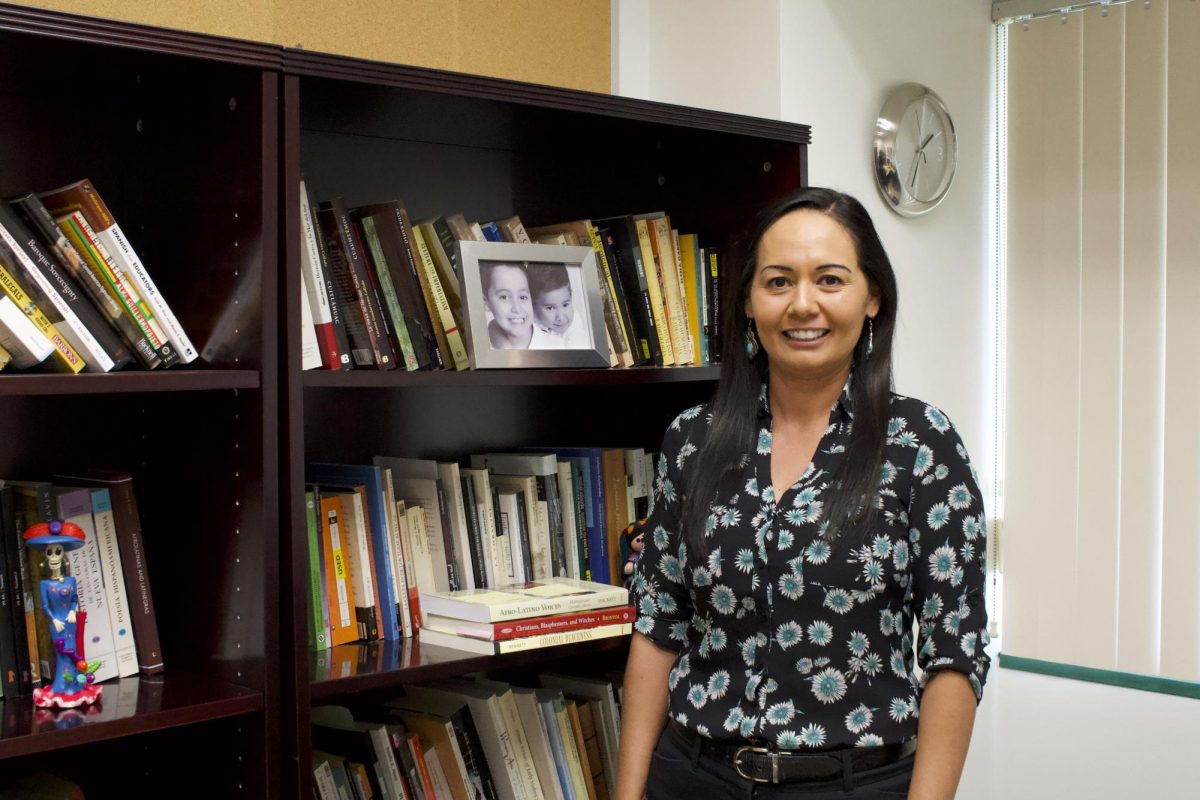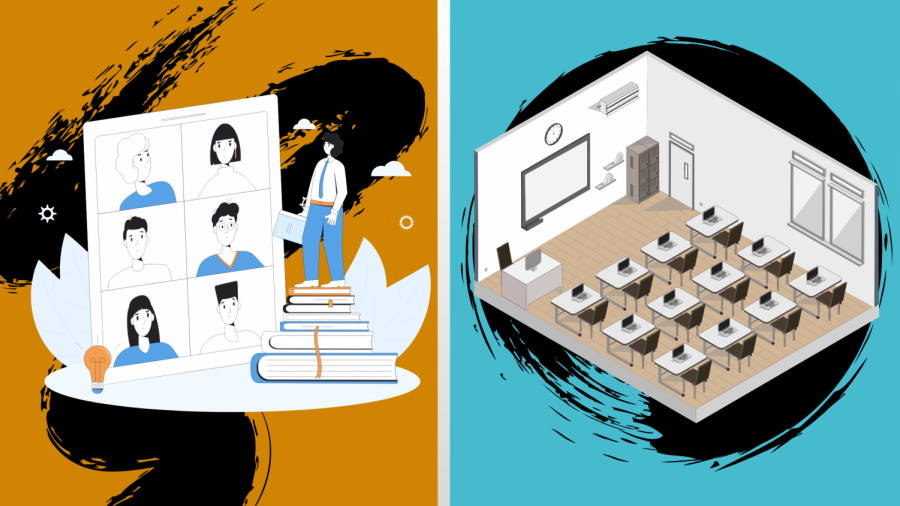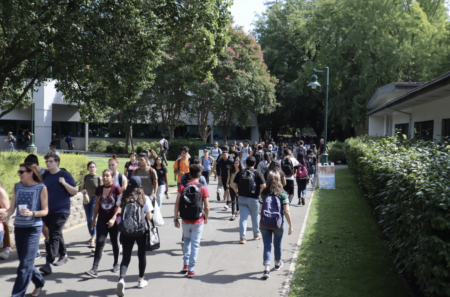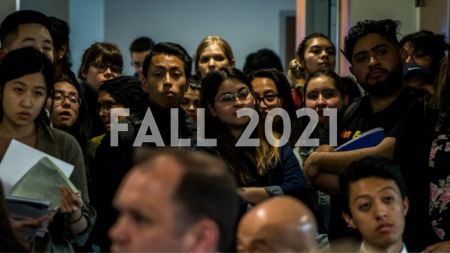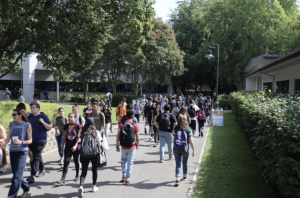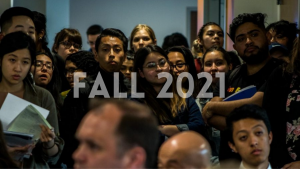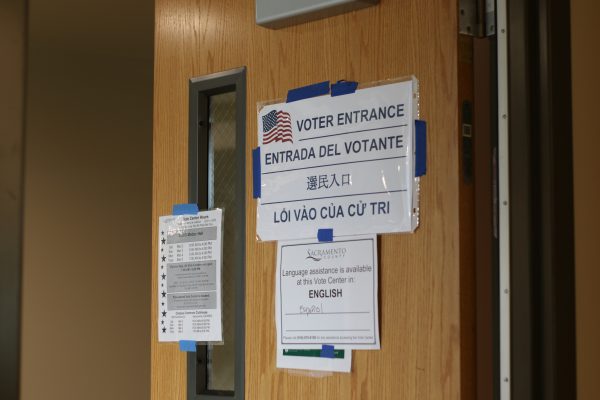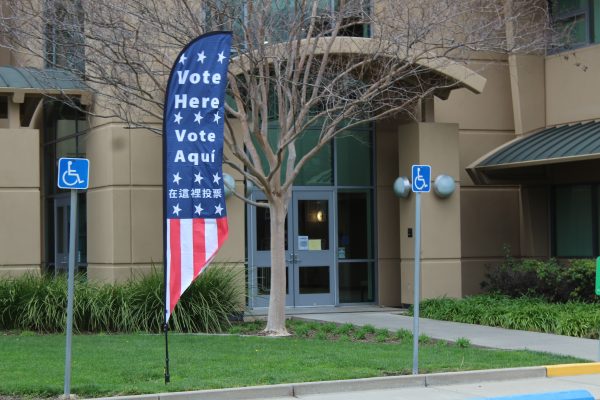FAQ: HyFlex and HerkyFlex, what’s the difference?
$8 million spent to support a HyFlex model at Sac State
Sacramento State defines the HyFlex modality as a course format that combines face-to-face and online learning on their website. The website states that each class session or learning activity is offered in-person, synchronously online and asynchronously online.
May 18, 2021
Sac State proposed seven course modalities for fall 2021 that currently appear on student’s Student Center: Hybrid, HerkyFlex, HyFlex, blended, fully in-person, online synchronous and online asynchronous.
The State Hornet has organized this FAQ to provide answers regarding the HyFlex modality as well as the difference between HyFlex, HerkyFlex and Hybrid.
Question: What is a HyFlex modality?
Answer: The HyFlex model is a conceptual framework — not software, Vice Provost for Faculty Affairs William DeGraffenreid said.
Sac State defines the HyFlex modality as a course format that combines face-to-face and online learning on their website.
Sac State students have a choice about how they will engage in their learning, according to an instruction mode schedule course update by Sac State’s Office of the University Registrar on March 12.
The website states that each class session or learning activity is offered in-person, synchronously online and asynchronously online.
Students can choose to attend the real-time on-campus class session, attend the real-time class session via Zoom or they can choose to take the class fully asynchronously.
RELATED: FAQ: Everything you need to know about Sac State’s return to campus in fall 2021
Ideally, students are able to choose which format they prefer for each scheduled class session. This option could be limited due to caps on how many students are allowed in a classroom at one time, according to the course update from the registrar.
The HyFlex model was developed at San Francisco State University to bridge the diverse needs that students could have for classes, according to DeGraffenreid.
“So it’s designed to simultaneously allow for in-person and synchronous remote attendance,” DeGraffenreid said. “It is also recorded in such a way so that it is available for asynchronous use as well as for the students.”
HyFlex can be implemented using an institution’s existing course management system or other online course infrastructure, according to DeGraffenreid. He added HyFlex might help institutions move toward a more customized teaching and learning approach.
Q: What is a HerkyFlex modality?
A: HerkyFlex enables students to choose between two modes of instruction, in-person, or synchronous online, according to an instruction mode schedule course update by Sac State’s Office of the University Registrar.
Each class section and learning activity will be offered in-person in an on-campus classroom and simultaneously online. All instruction will take place at a predetermined scheduled time, according to the update.
Q: What is a Hybrid modality?
A: Meets partially online and partially in person, according to an instruction mode schedule course update by Sac State’s Office of the University Registrar.
Some class meetings are held in-person as scheduled and the remainder of the class is conducted online synchronously or asynchronously.
Students are recommended to refer to the course’s syllabus for details, however internet access is required, according to the update.
Q: How does a HyFlex model look like in a Sac State classroom?
A: A HyFlex model needs to be set up in the classroom with a camera for videoconferencing and interacting with students at a distance, according to The University at Buffalo Center for Educational Innovation (CEI)’s website
To accommodate the HyFlex modality, there were several different technology solutions added to Sac State’s classrooms, according to Jenae Cohn, Director of Academic Technology at Sac State’s Information Resources and Technology (IRT) division. She said via email that the technology solutions include the following:
-
USB camera with remote control and tripod
-
USB microphone
-
Desk mounts for cameras
-
USB hubs and adapters for ease of connecting multiple devices
-
Ceiling-mounted cameras
-
Rechargeable lapel and handheld microphones
-
Ceiling mounted array microphones
-
Tethered sit/stand desk with built-in PCs
-
Webcams for built-in PCs
This project encompasses large and small to mid-sized room configurations, according to Sac State’s website.

Aside from Zoom, a cloud-based audio/video web conferencing and recording application, Sac State plans to integrate two additional classroom technologies, according to their website.
These technologies include Mediasite Lecture Capture, which allows instructors to record and live-stream lectures, and ShareLink Wireless which allows instructors to display content from anywhere in your classroom with a laptop, smartphone, or tablet.
Q: How much does it cost to update classrooms to support a HyFlex model?
A: IRT is looking at many different models to install depending on the classroom, DeGraffenreid said. He added that this technology could be used for other things down the line.
Cohn said that the total cost of the upgrades is approximately $8 million. She added that approximately $1 million of HEERF funds were granted for faculty during the summer to teach effectively with technology.
Vice President of Student Affairs Ed Mills told The State Hornet the second round of Higher Education Emergency Relief Funds provided to Sac State allocated $14 million to IRT.
Mills said the HEERF II funds allocated to IRT is going toward virtual teaching equipment, teaching workstations, classroom upgrades, Wi-Fi hotspots, outdoor Wi-Fi and cyber security.
Cohn added that 436 classrooms are being upgraded. The classrooms consist of 60 in Arts & Letters, 5 in College of Business Administration, 20 in College of Continuing Education, 40 in College of Engineering and Computer Sciences, 35 in Health and Human Services, 158 in interdisciplinary classrooms, 27 in the library, 64 in College of Natural Sciences and Mathematics and 15 in College of Social Sciences and Interdisciplinary Studies, according to Cohn.
“We’re still in the process of upgrading and have not yet finished the upgrades yet,” Cohn said.
DeGraffenreid said that the cost to update classrooms “is very significant,” however it depends on the room.
“We have a handful of classrooms that are largely ready for that because they have been used for remote instruction in the past,” DeGraffenreid said. “We have some classes that need to have just cameras added to the rooms, because they already have the projector, and audio systems.”
Sac State has systems for smaller classrooms that include portable settings, with a webcam, and a portable mic, according to DeGraffenreid.
Q: Why will the HyFlex model not be available for every classroom at Sac State?
A: “The choice on whether a class is HyFlex or not will depend on the faculty member and their desires,” DeGraffenreid said. “HyFlex is just one of the many models of classes that we expect to see in the fall and we may have some in-person classes as have you heard.”
Many classes will still remain online and others will be traditional hybrid classes, according to DeGraffenreid.
Q: How does the HyFlex model work best?
A: DeGraffenreid said it is to his understanding that the HyFlex model works best with a classroom assistant to help manage that.
Q: Does the HyFlex model work for all courses?
A: “The HyFlex model does not work on all courses, but it can work on most,” DeGraffenreid said.“The way to think about it is, can this context be taught effectively fully online? Could this be taught face-to-face? If the answer to both questions is yes, it can be taught in a HyFlex course context.”
Q: What are the benefits for students using the HyFlex model?
A: California Faculty Association Vice President and sociology professor at Sac State, Kevin Wehr, said that he thinks the benefit of Hyflex is that it provides flexibility to students..
“You can do some things in person that you just can’t really do as well online,” Wehr said. “And there’s some things that you can do in a synchronous online course that you can’t do in an asynchronous online course.’’
Q: What are the negatives and benefits of faculty teaching the HyFlex model?
A: The HyFlex model does seem like a lot of work for faculty, according to Wehr.
He added that when faculty prepares to teach a class they have to take the modality of the course into account to design curriculum and the course material. It takes a lot of thinking, training and time to move the curriculum from one modality to the other, according to Wehr.
“What I see in the HyFlex model is the possibility that faculty will be doing three times the amount of work that they would do if they were just teaching in one of those modalities,” Wehr said. “I don’t see much benefit for faculty.’’
DeGraffenreid added that the positives is that HyFlex provides a great deal of flexibility to students, which is the reason it was developed.
“The challenge is that it is a new model,” DeGraffenreid said. “It is a model that faculty members may not have not thought much about, and so we have to think carefully about their classes and if it’s going to work for them.”
Q: What would be the best teaching model for faculty this upcoming semester?
A: Wehr said he thinks most faculty and students would prefer to meet in person provided that it was safe to do so, and provided that everyone has been given availability to get the COVID-19 vaccine.
Much of the faculty will be able to teach in-person classes because of their employment at the university and the tier of availability for education is pretty high, according to Wehr. He added that the same cannot be said for students, as many students will not see availability until the summer or the fall.
“I would say the best modality is the one that serves our students the best possible way, while keeping everybody safe and healthy,” Wehr said.



















